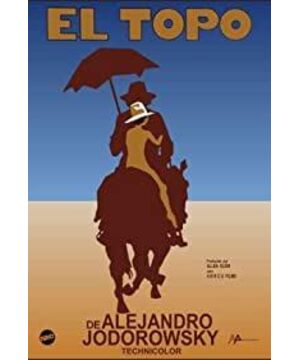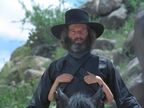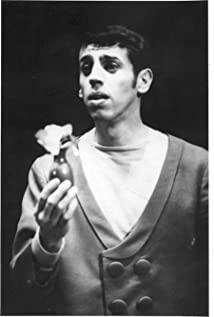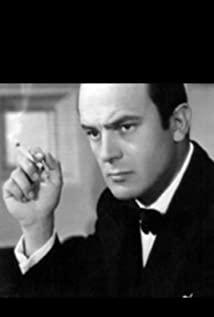"Evil Classics Video Hall" is Uncle Zhao's viewing notes.
Selected classic cult films of film history for interpretation,
Help everyone understand its story and the culture behind it.
A long, long time ago, wild Mexico.
Mole is a sharpshooter.
On this day, he rode a horse, took his son to the desert, and held a "mitzvah ceremony" for his son: burying his first toy and a photo of his mother.
Then, they embark on a magical, bloody, bizarre journey.
In this way, the film history cult film "The Mole" (El topo) began.
(Spoilers below)
Mole and his son came to a village and found that the villagers and livestock were all killed.
In order to maintain justice, Mole went to the murderer to settle accounts.
First, on a sheep-herding hill, I easily dealt with the three little minions.
They went to another village and killed their emperor.
Mole is like a god, in the barbaric world, justice for the common people.
But heroes are also human beings, and they are also deceived by desires.
There was a maid in the Tu Emperor's palace, who saw the mole's excellent marksmanship, and took the initiative to give her a hug.
Mole couldn't stand the temptation of lust, so he left his son and took the woman to wander the world.
But this relationship is a hole.
In the desert, the woman suddenly asked the mole:
Do you love me? If you love me, there are 4 musketeers in this desert, you go and defeat them.
The Mole pulled the woman to challenge the Master of the Musket.
It's just that the means are a bit despicable.
The first musketeer was a practitioner.
His eyes can't see, but he has magical perception and reaction speed.
To defeat him, Mole had dug a hole at the duel site and covered it with hay.
The master could not see, fell into the pit during the duel, and the mole took the opportunity to kill him.
The second musketeer lived on a dry river bed with his mother and was obsessed with making small objects every day.
His marksmanship is accurate, far better than a mole, but he has a weakness, that is, he is very dependent on his mother.
So Mole thought of a way to hide a nail in the sand.
When the master's mother stepped on it, the master checked her mother's wound, and the mole attacked from behind, killing the master.
The third musketeer is a rabbit farmer who loves music, and his weakness is that he believes too much in rules.
He and Mole exchanged pistols and agreed that he would shoot the mole in the heart and the mole would shoot him in the head.
As a result, Mole put a copper plate in his heart beforehand, blocking the master's bullet.
But instead of shooting the master's head as agreed, he shot his heart.
The master was killed by the mole.
The fourth musketeer, an old beggar, used a butterfly net to catch the mole's bullets, leaving the mole helpless.
But he has a weakness, that is, he has no desires and no desires, and he can even give his life to a mole.
In this way, Mole defeated the four masters and became the number one in the musket world, but he was not happy at all.
And when he went to the woman, he found that she was with a female gunman with a man's voice.
The female gunman shot the mole and walked away with the woman.
The Mole was rescued by a group of dwarves and led into a cave.
When he woke up, many years had passed, and his appearance and mentality had changed a lot.
In this way, the mole lived with the dwarfs and gradually learned about their experiences.
It turned out that they were all products of inbreeding, and they were driven here, but they yearned for the outside world.
But the only exit of the cave is at the top of the cave, which requires climbing a high stone wall to get there, which is inconvenient to get in and out.
The Mole sympathized with the gnomes and promised to dig a tunnel to the outside world.
So, he carried a female dwarf on his back, climbed out of the cave, and went to a small town to earn money by performing arts.
Soon, the mole and the female dwarf gradually had feelings for each other and decided to get married.
And when they went to the church to find the priest, Mole was surprised to find that the priest was the son he had abandoned...
"The Mole" was released in 1970. It is a work directed and performed by Mexican director Alessandro Jodorowski. part".
The film, which cost only $400,000, was full of obscure violence and eroticism, and when it first arrived in the United States, it could only be screened as an underground film.
Later, Ben Barrenholtz, owner of the Elgin Theater in New York, saw the film and liked it very much.
Convinced the producer to let "The Mole" show at midnight on weekends in his theater without buying the rights.
As a result, the audience was in high spirits, without sleepiness, and even watched it repeatedly, discussing the details and connotations of the film.
At that time, John Lennon, the lead singer of the Beatles, watched "The Mole" three times and liked it very much, so he found a relationship to let it be released in the United States, and helped release the "Mole" movie soundtrack.
And invested $1 million in Jodorowsky's next work, The Holy Mountain.
In this way, "The Mole" finally succeeded.
Later, many underground movies imitated the successful route of "The Mole" and entered the midnight show, forming a "midnight movie craze".
Such as "The Uninvited Guest", "Pink Flamingo", "Rocky Horror Show", "Eraser Head" and so on.
This midnight movie craze later evolved into a cult film culture.
Therefore, "The Mole" is the founder of the cult film culture and the supreme cult film.
So why is The Mole so fascinated?
Because the characters, plots and details in the film carry rich metaphors, giving people the desire to interpret.
For example, the three musket masters each represent a philosophy of life.
The first practitioner represents the idea of seeing through the color and the unity of man and nature.
The second place, respected the precise science and technology, such as China's Mozi.
Third, believe in rules and laws of nature.
The fourth place has reached the realm of "inaction" in Lao and Zhuang.
The mole killed the four masters with tricks, representing the process of human beings accepting modernity and abandoning classical philosophy.
In this process, human beings have become the masters of the world, but they also face the problem of moral decline.
Such metaphors abound in the film, covering history, society, religion, philosophy, and more.
For example, the dwarf in the cave represents that in the process of human development, the dark side of human nature is buried under the bright and bright social system.
The mole town is full of contradictions such as class, race, religion, etc. It is the epitome of the contemporary Western world.
And Duzolowski expressed his views on these issues in a unique way.
One of the scenes was very impressive.
A priest plays "Russian roulette" with his faithful at a church assembly.
A preacher who resembles Jesus (the son of the mole), disliked by the priest's tricks, reveals the truth that the gun is empty and puts a real bullet.
So people began to believe in the preacher.
The crowd dispersed, and the missionaries tore down the banners of the old sect, revealing the cross.
This scene is likely to allude to the process of the development and growth of Christianity.
The "Russian Roulette" at church gatherings also reflects the director's more extreme views on religion.
The accumulation of these plots forms a minimalist history of mankind: from the savage fighting in ancient times, to the abandonment of classical philosophy and into modern times.
In the end, the mole led the dwarf into the town, but was slaughtered by the people in the town, representing the outbreak of the dark side of mankind, that is, war.
The mole used self-immolation to protest the massacre, just as the Vietnamese monks self-immolated to protest the Vietnam War.
Therefore, "The Mole" uses a violent story to summarize the development of human beings and reflect on human culture and history.
In the film, one side is unbridled killing and animal desires, and the other side is the philosophy and warmth that are persuasive.
No political correctness, no commercial calculations, only free and honest thinking.
After reading it, it is like traveling through human history and gaining profound wisdom, which is the dual satisfaction of senses and thinking.
It deserves to be called the "Cult Film Supreme".
Next notice:
"The Holy Mountain" by Jodorowsky
View more about El Topo reviews











